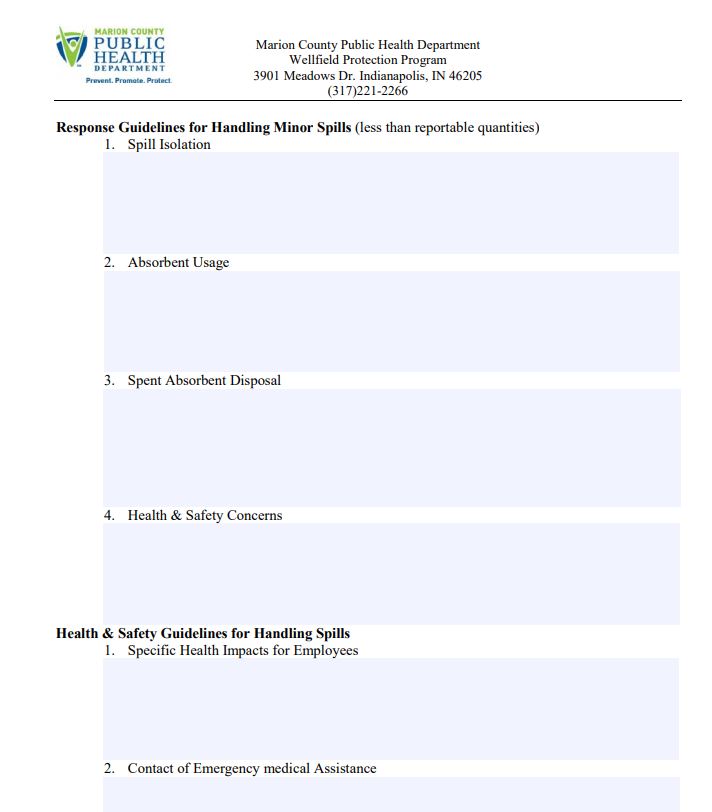Part 1 | Part 2 | Part 3 | Part 4
This is Part 3 in a series about the Emergency Response and Spill Prevention Plan, one of the requirements for many businesses located in Marion County wellfields. The Marion County Public Health Department (MCPHD) provides a spill plan template which is available here. This fillable pdf template is a short four page plan that allows most businesses to produce a straightforward spill plan that is easy to write and use.
Page 3 of the Marion County Public Health Department (MCPHD) Spill Plan template deals with minor spills. A minor spill is defined as spills where the volume of chemical spilled is less than the ‘reportable quantity’. For most businesses, this means spilling several gallons or less of a chemical.
Response Guidelines for Handling Minor Spills
Question 1 asks you to detail how you would isolate a spill. A simple description of what materials you would use to stop a spill from spreading, such as absorbent socks, or oil-dri, would be acceptable.
Question 2 requires you to list the various types of absorbents you plan to use to clean up a spill – oil-dri, absorbent pads and so on.
Question 3 asks how you intend to dispose of absorbent materials that are used to clean up a spill. Generally speaking, if the materials are not dripping liquids, then they can be placed in a garbage bag and put in a trash dumpster. If there is a lot of fluid waste, then you may require the services of a waste disposal company. A number of these companies are listed on our website for your convenience.
Question 4 asks what Health and Safety Concerns are involved with cleaning up the spill? Should your employees wear gloves, eye protection or a face mask while performing spill clean-up? Are there special concerns with splashing spill materials in eyes or breathing in fumes?
Health and Safety Guidelines for Handling Spills
Under this section, there are three questions about safety for you and your employees regarding cleaning up spills.
Question 1 asks what specific health impacts there might be for employees cleaning up a spill. Is there a risk of splashing or spraying into their eyes, is there a danger of inhaling fumes or getting the spilled chemical on their skin (skin burns or irritation)?
Question 2 requires you to list your Emergency medical assistance contacts. This can include 911 as well as any specific company employee who is designated as a safety officer, for example.
Question 3 asks you to list what you may have to do to provide short-term aid to an employee who suffers health impacts listed in Question 1 of this section. For example, if the employee is overcome by fumes, you should try to move them to a fume-free area or increase ventilation of fresh air by opening a door or turning on an exhaust fan.
That’s it for Page 3 of the Spill Plan! View the other posts in this series for more information about the other parts of spill plans.
Part 1 | Part 2 | Part 3 | Part 4

